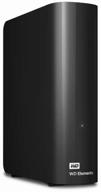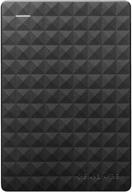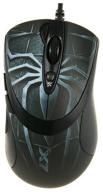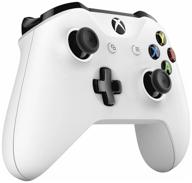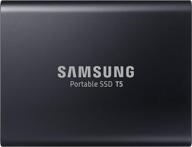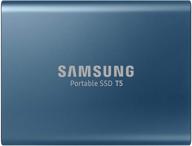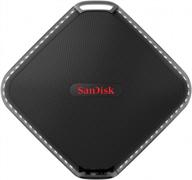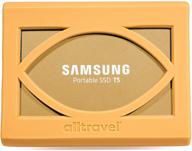Another interesting products
Benefits of External SSDs
External solid state drives (SSDs) have become a popular data storage option in recent years. Their benefits in speed, durability, size, and portability make them an appealing alternative to traditional external hard disk drives (HDDs).
Similar products
Speed
One of the biggest advantages of an external SSD over an HDD is the faster speed. SSDs have faster read and write times compared to HDDs because they use flash memory and have no moving parts. This makes accessing and transferring your data much quicker with an SSD.
- Faster boot up times - External SSDs can boot up in just seconds.
- Quick file transfers - Large files like photos, videos, and games copy over in a fraction of the time.
- Reduced loading times - Applications and programs start up almost instantly.
Top products in 💾 External Solid State Drives
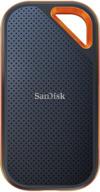

10 Review

Durability
Being more resistant to shock and vibration makes external SSDs a sturdier and safer choice for data storage. They are better equipped to withstand being dropped or bumped while powered on.
- No moving parts - Unlike HDDs, SSDs are less prone to component failure.
- Shock and vibration resistant - Ideal for travel and on-the-go use.
- Withstand accidental drops - Data remains intact if the device is dropped.
Compact Size
The small, lightweight builds of external SSDs make them super portable and easy to tuck away.
| External HDD | External SSD |
|---|---|
| Typically 2.5" or 3.5" drives | As small as 1.8" drives |
| Can weigh over 200g | Weigh as little as 30g |
Portability
External SSDs are extremely portable drives due to their compact size and durable build. Some key advantages include:
- Lightweight and compact
- Ideal for travel
- Mobile friendly connections like USB-C
- Resists shock and vibration
- No need for external power
In summary, external SSDs are a fast, durable, portable, and compact data storage solution. Their major benefits make them well suited for on-the-go use and situations where speed, size, and resilience are important factors. When choosing an external drive, strongly consider an SSD over an HDD.
Portability - Choosing the Right External SSD
When selecting an external SSD, portability should be a key consideration. The right portable SSD will make it easy to access, store, and transfer data anywhere.
Size
External SSDs come in a range of sizes. Smaller drives maximize portability:
- 1.8 inch - Extremely compact and lightweight. Easy to slip into a pocket.
- 2.5 inch - A good balance of portability and storage capacity.
- 3.5 inch - Higher capacities but less convenient for travel.
Weight
Look for a lightweight SSD to minimize the load:
| Drive Size | Average Weight |
|---|---|
| 1.8 inch | 1.5 oz |
| 2.5 inch | 2.5 oz |
| 3.5 inch | 5 oz |
Durability
To withstand being carried around, choose an SSD with:
- Solid state construction - No fragile moving parts.
- Metal or rubber casing - Provides shock absorption.
- Water and dust resistance - IP54 or IP55 rating.
- Drop resistance up to 6 feet.
Power Source
Look for USB bus-powered options that don't require external power cords and adapters.
Connection Type
Connection interfaces like USB-C provide power, transfer speeds, and easy connectivity:
- USB-C - Reversible and sleek. Up to 10Gbps transfer speed.
- USB 3.2 - Compact. Up to 20Gbps transfer speed.
- USB-A - Bulky but compatible with more devices.
Security
Data protection features like password protection and hardware encryption provide security when your SSD is on the go.
Choosing a portable external SSD requires evaluating size, weight, durability, power source, connections, and security features. Selecting a drive that excels in these areas will provide the best experience for on-the-go use.
Read and Write Speeds - Top External SSDs on the Market
When choosing an external SSD, read and write speeds are key specifications to consider. Faster speeds allow for quicker file transfers and an overall smoother computing experience.
Factors Affecting Read/Write Speeds
The interface and memory type impact read and write speeds:
- Interface - Newer USB standards like USB 3.2 Gen 2x2 provide faster maximum speeds.
- Memory Type - SLC memory offers the fastest performance but is more expensive.
Top External SSDs by Read/Write Speeds
| External SSD | Read Speed | Write Speed |
|---|---|---|
| Samsung X5 | 2,800 MB/s | 2,300 MB/s |
| WD Black P50 | 2,000 MB/s | 2,000 MB/s |
| SanDisk Extreme Pro | 1,050 MB/s | 1,000 MB/s |
| Seagate FireCuda | 1,050 MB/s | 1,000 MB/s |
| Samsung T7 Touch | 1,050 MB/s | 1,000 MB/s |
Max Read Speed
The Samsung X5 has the fastest read speed at 2,800 MB/s. This SSD uses Thunderbolt 3 connectivity for lightning fast transfers.
Max Write Speed
The WD Black P50 and SanDisk Extreme Pro tie for the fastest write speeds at 2,000 MB/s and 1,000 MB/s respectively. Their high-performance makes saving and transferring data a breeze.
Most Balanced Read/Write Speeds
The Seagate FireCuda and Samsung T7 Touch have equal read and write speeds of 1,050 MB/s and 1,000 MB/s. Their balance of performance makes them great all-around options.
For power users and professionals, read and write speeds are essential for optimizing workflow efficiency. The latest external SSDs now rival internal drives for speed and performance.
SanDisk Extreme Portable SSD
The SanDisk Extreme Portable SSD is one of the top performing external SSDs on the market. With fast transfer speeds, durable design, and plenty of capacity options, it's a great choice for users who need portable storage.
Speed
The SanDisk Extreme has great read and write speeds, with up to 1050MB/s read and up to 1000MB/s write speeds. This quick performance reduces waiting time when transferring large files like photos, videos, and games.
Design
This drive features an IP55 rating, making it highly dust and water resistant. It's also shock resistant up to 1500G and can withstand drops from up to 6.5 feet. The compact size is perfect for portability.
- Dimensions: 3.79" x 1.95" x 0.35"
- Weight: 1.76oz
Capacity
The SanDisk Extreme is available in 250GB to 4TB capacities, providing flexibility based on your storage needs:
| Capacity | Price |
|---|---|
| 250GB | $59.99 |
| 500GB | $89.99 |
| 1TB | $169.99 |
| 2TB | $289.99 |
| 4TB | $949.99 |
Connections and Compatibility
Connection options include USB-C and USB-A cables for broad compatibility. The drive works with Windows, Mac, iOS, Android, gaming consoles, and more.
Security
The SanDisk Extreme offers 256-bit AES hardware encryption to help keep your files secure.
With its rugged design, fast speeds, and a range of capacities, the SanDisk Extreme Portable SSD is an excellent choice for those needing a dependable and portable external SSD.
What Are The Benefits Of Using An External Solid State Drive??
Using an external solid-state drive (SSD) for data storage has several benefits over traditional hard disk drives (HDDs). Here are some of the advantages of using an external SSD:
Overall, using an external SSD can greatly enhance the performance of your system, provide faster data transfer rates, and offer more convenience and portability.
What Are The Differences Between An External SSD And An External HDD??
External solid-state drives (SSDs) and external hard disk drives (HDDs) have some key differences. Here are some of the main differences between the two:
External SSDs:
External HDDs:
Overall, external SSDs are faster, more durable, and more portable than external HDDs, but they are also more expensive. External HDDs are slower and less durable, but they offer larger storage capacities at a lower cost. The choice between the two depends on your needs and budget.
What Are The Advantages Of Using An External HDD Over An External SSD??
External hard disk drives (HDDs) have some advantages over external solid-state drives (SSDs). Here are some of the benefits of using an external HDD:
However, there are also some drawbacks to using an external HDD. HDDs are slower than SSDs, with slower read and write speeds. They are also less durable than SSDs, as they have moving mechanical parts that can be damaged by bumps or shocks. Additionally, HDDs are heavier and bulkier than SSDs, making them less portable and more difficult to carry around.
Overall, the choice between an external HDD and an external SSD depends on your needs and budget. If you need a large amount of storage at a lower cost and don't require fast read and write speeds, an external HDD may be a good option. However, if you need faster read and write speeds, more durability, and greater portability, an external SSD may be a better choice.





